The Australian dollar rallied strongly over the course of the last week. Indeed over the past few weeks we have had the Aussie test and hold important Fibonacci support in the 1.0220/40 region a couple of times and closed the week approaching 1.05.
So the question I ask myself is this another head fake or is the Australian dollar about to embark on its next upward move?
How is it that the Australian dollar can rally so hard at a time when the RBA is about to cut rates and probably signal more cuts? How can the rally transpire that Australian yields and thus spreads to the US and other markets are contracting? How can it be that the Aussie is rallying when April has been one of the biggest month’s for equity withdrawals in the past generation of investors? How is it as the global growth profile is once again weakening and China looks like it is slowing as well?
Is it Aussie strength or is it USD weakness and what the difference might mean anyway?
Lets deal with the USD first.
Clearly the data and Fedspeak from the US, in forex traders minds if not the stock market, was disappointing last week and the USD suffered – here are the charts for USD/JPY and EUR/USD:
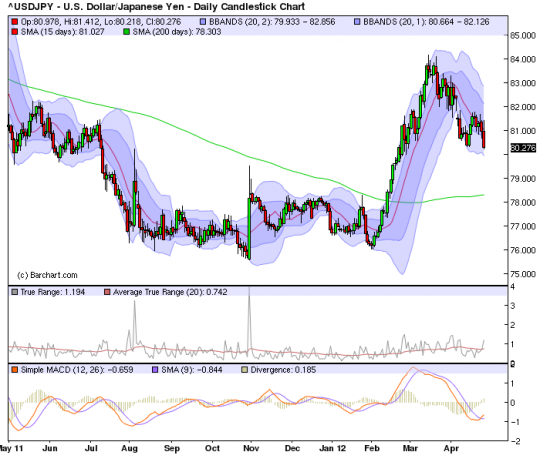
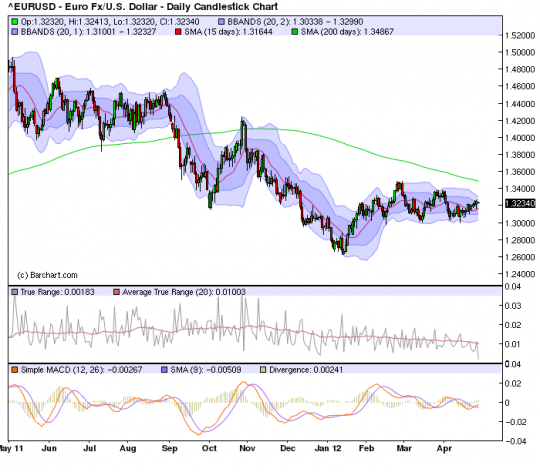
The move against the Yen, or should I say the drop was much more stark than that against the euro but for the euro to be holding up with everything that is going on in the Eurozone and the mess of its economies and banking system is a story of how weak the USD is in itself.
To wit, I offer the chart of Sterling, the British pound versus the USD. As you’ll know the UK’s GDP print last week was pretty poor and showed the first double dip recession since last time the IMF was in the UK in the 1970′s. But Sterling rallied as you can see in the chart below:
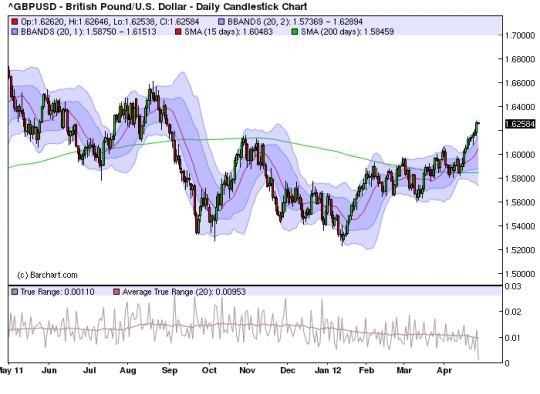
How that makes any sense realistically or fundamentally is difficult to fathom. But it does tell you last week’s Australian dollar move was all about the USD.
Looking at the Aussie’s move in a short term time frame we see just how quick and aggressive the move was last week:
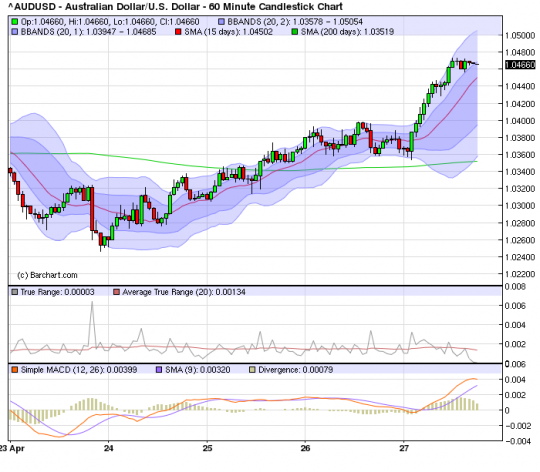
While the USD is under pressure, flowing from concerns over its economic outlook and Europe is continual mess, currencies of countries that are seen as either relatively more stable economically, like the Aussie, benefit from speculative buying.
But where to now?
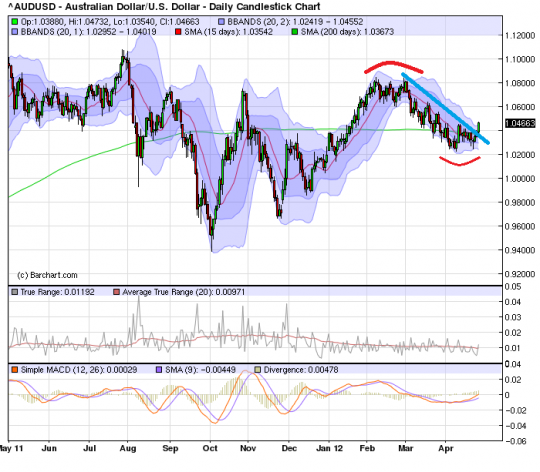
There is now clear evidence of a break of the recent down trend and I’d say that for the moment the Aussie is trapped in a range that is defined by the 1.0200/50 low and the 1.0850ish high recently. It is overbought at present on the hourlies, as you can see in the short term chart, but for the moment it probably has the daily momentum and equity market sentiment on its side.
In prospect though I note that the Citibank economic surprise index is pointing down again and also that traffic through the Suez Canal is down suggesting global trade is likely under pressure once again – both charts courtesy of Reuters:


My sense is that while equity markets are doing OK and while the data is on the weaker side (as incongruous as this combination may seem) the Australian dollar is going to do OK too. But as the two charts allude to above, the globe still has many challenges so my guess is that wherever the high is in this next run, the Aussie is still trading a big old range.
We didn’t get the run under one this time – important support held quite strongly. It’s now time to see where the real resistance is for the Aussie in the next little while.
Have a great day
Gregory McKenna
www.twitter.com/gregorymckenna
Please remember these are not recommendations for you to trade these are my views and I have my risk management tools and risk parameters that you do not have access to. Thus, this blog is for information only and does not constitute advice. Neither Greg McKenna nor Lighthouse Securities has taken your personal circumstances, objectives or financial situation into account. Because of this you should, before acting on this information, consider its appropriateness, having regard to your objectives, financial situation or needs.